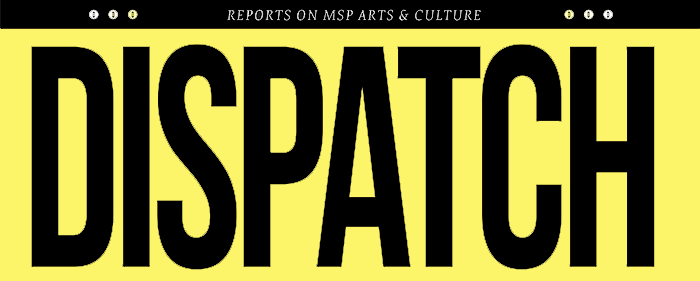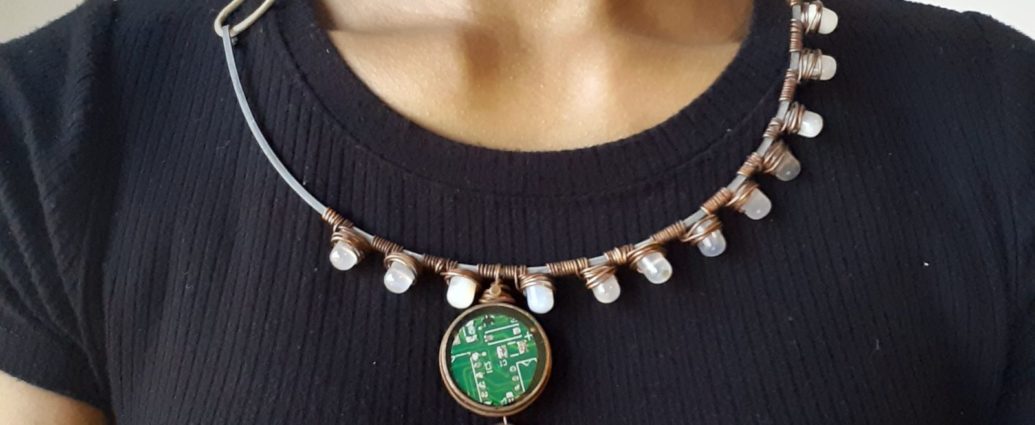A glimpse into the exhibit celebrating the art of women over 50.
Words by Isabelle Wattenberg
Cartoonist and illustrator Christi Furnas was eating breakfast with fellow artist Elizabeth Ruskin Shanklin when Shanklin expressed that, as an artist, she felt “invisible.” This revelation deeply unsettled Furnas.
“A lot of my colleagues are older women and they inspire me,” Furnas says. “I want to see more women’s art because what I’ve seen so far has been mindblowing, and it’s maddening that I’m not getting to see more of it. I just want to put it out there.”
The conversation sparked the idea for an exhibit, which opened at the end of February at the Fresh Eye Gallery and runs through March.
Revolutionary: The Feminine Perspective Beyond 50, features more than 30 pieces of artwork created by women aged 50 years or older. Each artist (including Furnas and Shanklin, its inspiration) has one piece featured. One of the exhibit’s most arresting qualities: its vast variety of creative expression. These women may share a generation—and the experiences that come with it—but their art is not bound by genre, topic, or medium.
“It makes me wonder if being underrepresented kind of frees you from feeling like you need to conform. Especially if you reach a certain point in your career, you have this freedom—almost like, ‘I’m going to make this for myself,’” Furnas says. “You’re making your own path, you’re not necessarily going to be recognized by the establishment.”
The paintings of Anne Spooner explore the relationship between animals and humans. She recalled her mother, also an artist, exhibiting her work at a bank.
“I was about 14 at the time and I remember having a rather snobbish opinion that it wasn’t a gallery with track lighting,” she says. “I didn’t appreciate that she had done this but of course I do now. It was daring of her and it inspires me to this day.” Spooner’s work, in part, honors her mother who showed deep empathy for animals.
Mosaic artist Lori Greene says when she entered art school in the mid ’80s, she wanted her work to make political statements, but the work only began to resonate when she “realized that the personal is political, especially as a woman of color.”
“I began to make very personal artwork, about my experience as a survivor of sexual violence and my experience with racism in this culture,” she says. “[Over the years] the materials have changed, but the desire to make art that serves a greater purpose than myself has not.”
Furnas notes art is necessarily political by way of the way political forces shape our experience within society and culture. Even the exhibit, she points out, makes a statement.
“I think having a lot of people supporting women in the arts is also supporting our cause politically,” she says.
If there is one creative thread that connects the exhibit’s pieces, it would be a sense of freedom from expectation.
Chiaki O’Brien teaches and practices a contemporary Japanese style of hand weaving (created by a 57-year-old, no less), that encourages irregularities and individual creativity. “SAORI weaving lets me express how I feel in that moment of weaving with no pressure,” O’Brien says.
Amy Wilderson—a jewelry artist, teacher, and gemstone intuitive—found wirework as a young mom seeking a creative outlet to fit in with her work running her own store and raising children. She’s had to contend not only with being an older artist and a Black woman, but also an artist whose medium is typically excluded from traditional art spaces.
“There’s a perception of jewelry as fashion, or ‘crafty,’ as if it has less value,” Wilderson says. “And just by way of the spaces that I occupy, I have been pushing on that notion…You have to make it first and be able to create and then someone will say, ‘I’ve never considered something like this before.’”
Wilderson’s exhibition piece is a necklace made entirely of found materials, including a computer motherboard, bra underwire, and fence wire.
“I really love being invited into this exhibition because that theme of healing energy and women and womankind holding up ourselves and our bodies—our breasts in place—has been underneath,” Wilderson says. “All these things are around me and I’ve brought them into my space as a reason.”
It’s also apparent that the artists are very much active and in the midst of their creative pursuits, with daring and exploratory upcoming works. Spooner is exploring installation art to complement and converse with her paintings. And O’Brien and Wilderson both teach art, which informs their work, too.
“I believe interacting with people—that includes going to new places to lead weaving sessions— leads me to feel and express what excites me most,” O’Brien says.
The artists will present their works and greet an audience in person at an Artist Talk on March 8 at Fresh Eye.
Wilderson said she’s only heard positive reactions to the exhibit. “The response I’ve gotten from it is—there’s this collective inhale and exhale,” she says. “It’s about damn time, but it’s always been.”
WHEN YOU GO
Feb 15-Mar 25
Artists Talk: March 8, 6:30 PM
Fresh Eye Gallery, 4238 Nicollet Ave., Mpls.
mplsart.com/events/revolutionary-the-feminine-perspective-beyond-50

